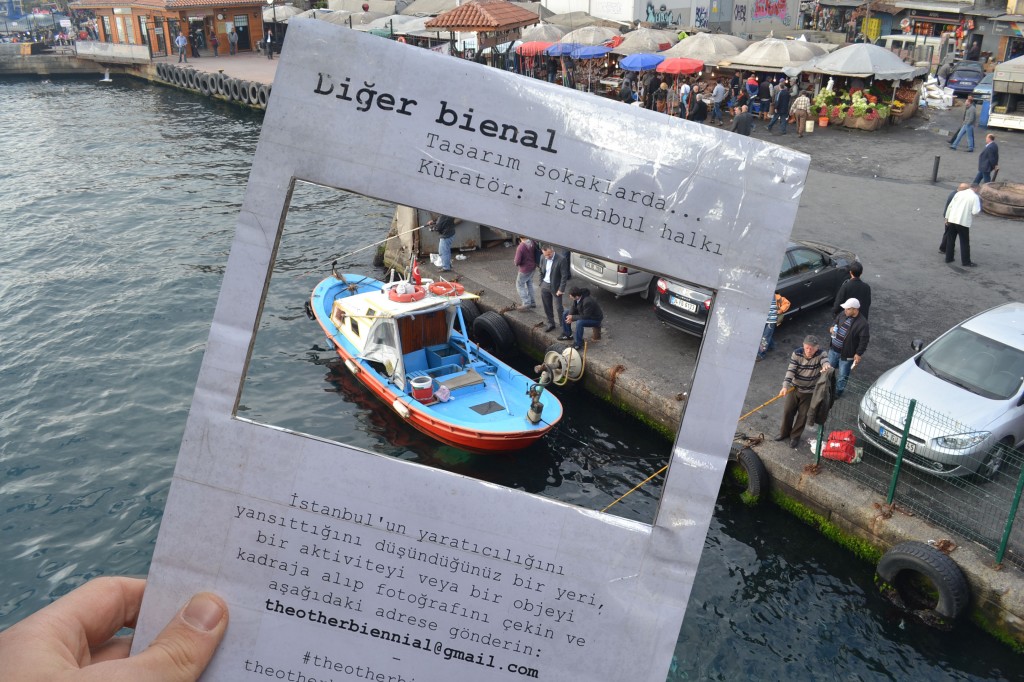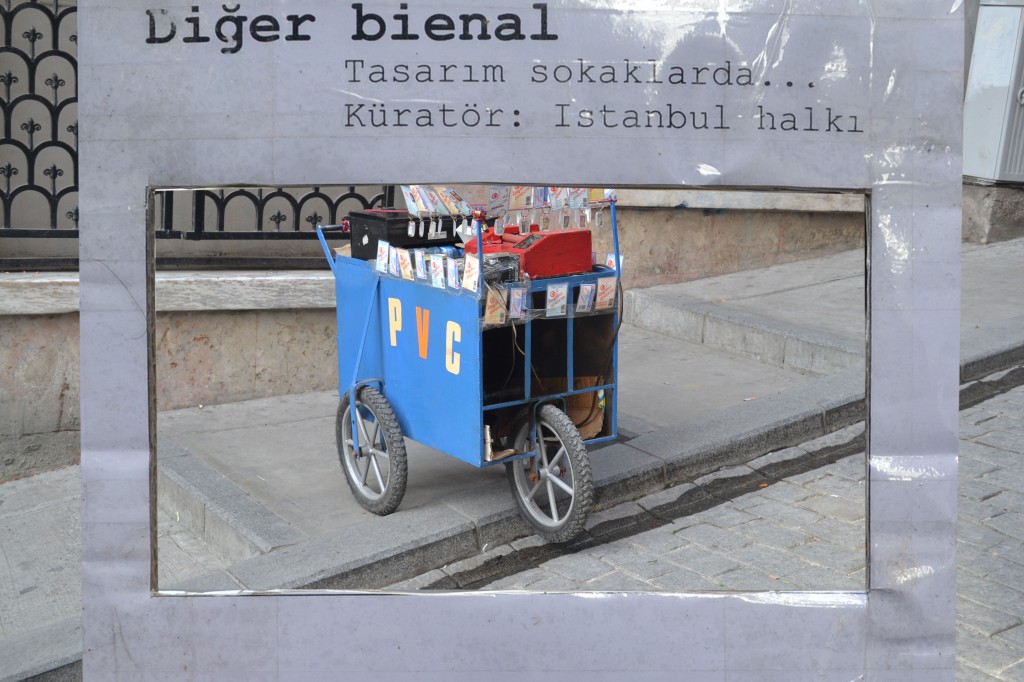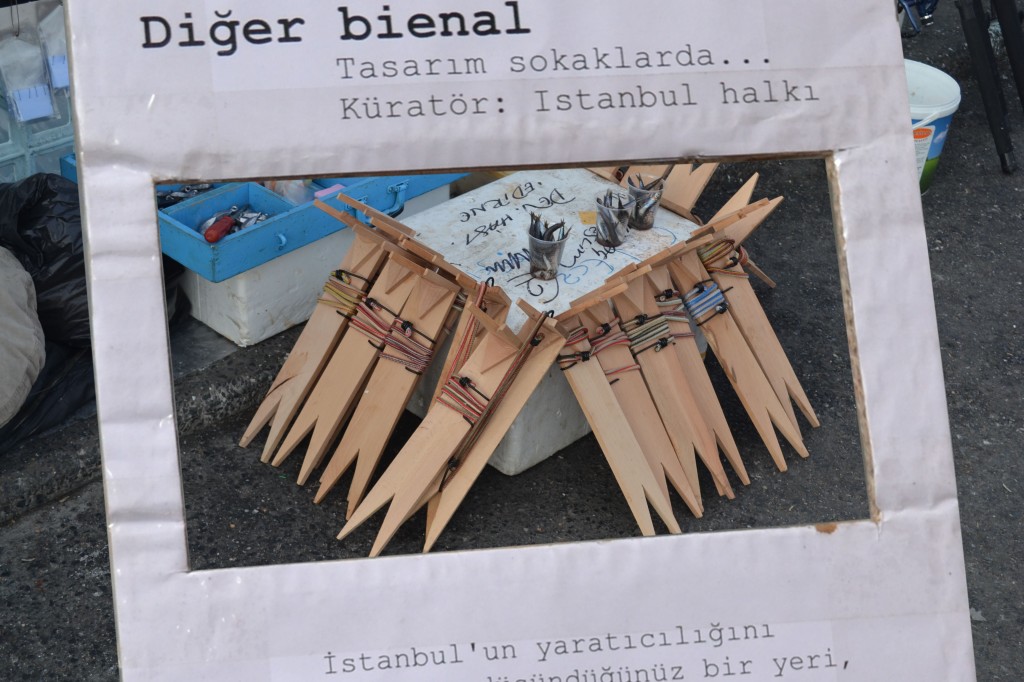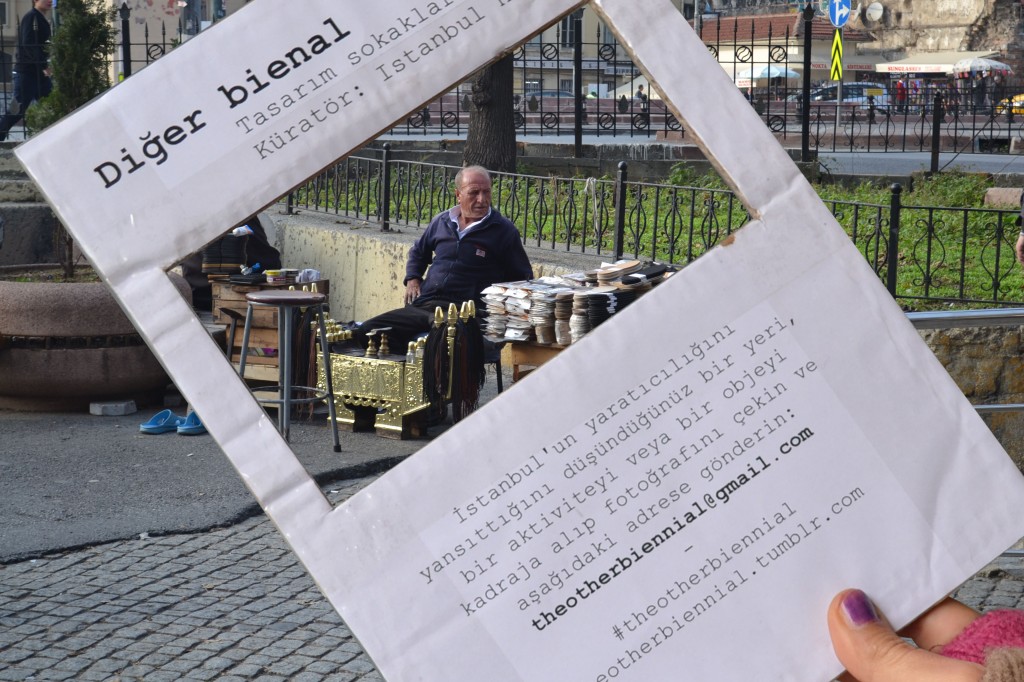The Other Biennial {Istanbul – 2012}
I was recently in Istanbul, visiting the first Istanbul Design Biennial. Found many interesting things, but no real connection to the city. Inspired in Michel de Certeau, went to walk on the city. Few people knew that the biennial was taking place. There is plenty of inventiveness on the streets of Istanbul. Many people have smartphones or carry cameras around. Street creativity can be crowd-selected and curated…
Check pictures taken by other people: http://theotherbiennial.tumblr.com
Send pictures of Istanbul street inventiveness: theotherbiennial@gmail.com
The pity is not so much that people don’t participate, but that when people want to participate, they are not given the tools or mediums to do so. This is what I found happening in Istanbul, where a Design Biennial abstracted from Istanbul’s everyday life, turned its back to the people, eager on collaborating in building a shared idea of design. This is why I have received positive comments and critiques on this small action-project, for it hits the nerve of street inventiveness. Here the words of Max Borka in a publication of his Facebook group Mapping the Design World:
Touched by the fact that there are hardly any traces to be found of the current Istanbul Design Biennial in the city streets, and that the event seems to be totally ignored by the local population, while on the other hand there are so many examples to be discovered in that very same street life to illustrate the themes of that biennial, such as ‘imperfection’ and ‘adhocracy’, and of the creativity with which the locals live up to these principles, Pablo Calderon Salazar, who graduated in Industrial Design at the Jorge Tadeo Lozano University in Bogota, Colombia, and is currently studying Social Design at the Design Academy of Eindhoven in the Netherlands, decided to create his own biennial that would focus on the richness of this street culture and its ‘Backgammon mentality’, constantly creating Something out of Nothing or what is available, finding solutions that are up to the moment, steered by intuition, improvisation, and flexibility, and always open for the random, chance, and the unexpected. Totally in line with this philosophy, Salazar grabbed some of the ubiquitous cardboard slabs in the streets, made some rectangular holes in them, added an inscription, and created frames that would help the visitors in spotting and photographing these good everyday design practices, that are strangely enough also totally absent from the official biennial’s events. He thus created his own exhibition, a mobile work in progress, with the people of Istanbul or it’s visitors –anyone- as a possible curator. On this picture: an arrangement of handmade wooden pieces that serve as a support for fishing rods on Istanbul bridges, a beautiful example of the Backgammon and çokçok or ‘More is More’ approach that makes nearly all Istanbulites very contemporary and radical designers in their deepest inner.




